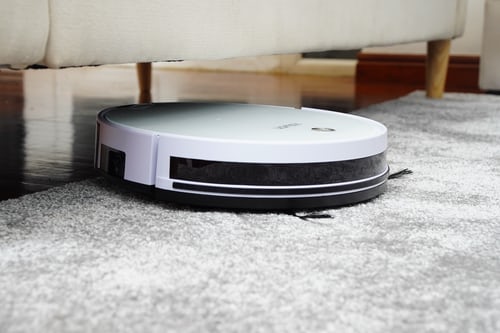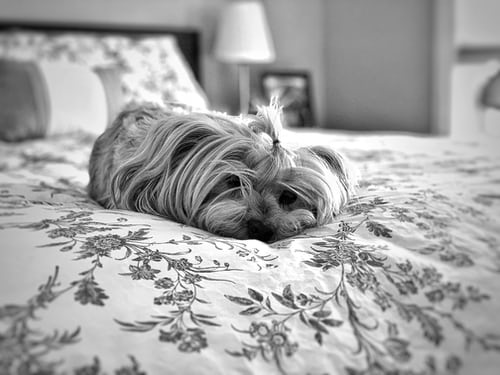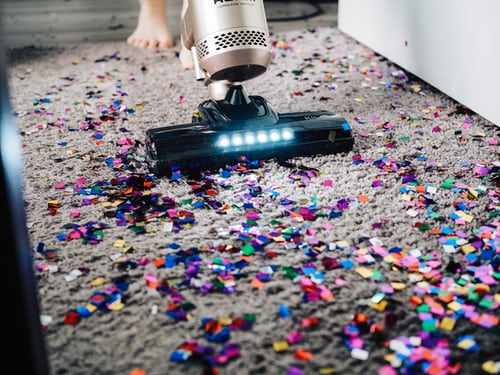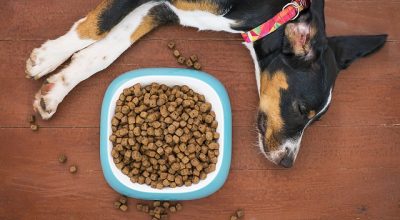Many pet parents do not recognize that having a vacuum can be a traumatic experience for dogs for the first time. Canine reactions to vacuums can range from entering attack mode to running away in fear. Since vacuums are a necessary evil, the best way to help your dog tolerate a day of cleaning is to train him to make a positive association with his dust-sucking nemesis. Here’s some insight into why dogs are afraid of vacuums and what you can do about them. Why do dogs hate vacuums?
Why Do Dogs Hate Vacuums: The Behavior’s Root

When we pull out the vacuum and plug it into the wall, the noise that turns on can be a little annoying. Your vacuum is large, it moves strangely, and it makes a rumbling noise that could threaten your animal. It’s no wonder your dog might be afraid of your vacuum.
There may be a few reasons why the vacuum feels so harmful to your animal, beyond the typical looks and sounds that seem frightening. When your dog is a puppy, they’re shy, and they’re trying to adjust to this world. If they are not exposed to vacuum at a young age, adjusting to the machine’s noise and structure can be unknown, frightening, and difficult.
They might also have had a bad vacuum experience when they were young. Dogs who are afraid of vacuum cleaners may also be afraid of other loud things, such as thunderstorms or lawnmowers. However, vacuums, in particular, maybe frightening, as your dog feels trapped in the same vacuum room and may also want to protect its owner. Dogs may also want to chase and attack vacuums as if they were an object to play with. Why do dogs hate vacuums?
1. Lack Of Exposure To:
If a domesticated dog is not groomed right from the start to get used to vacuuming, the pet will certainly come to see it as a threat and gradually develop a phobia for it. Well-trained puppies grow up to be used to different sound frequencies, objects, and scenarios in the home and surrounding environment.
2. Fearful Disposition Of:
Some dogs like Chihuahua and Affenpinscher are frightening pets when they are in close contact with strange objects and people. The average dog tends to be fearful and nervous about Vacuums and human beings whom they consider strangers.
3. Wheels Monster:
Dogs that are clever animals can tell the difference between a human being and an object. Objects are not meant to move like vacuum cleaners. A moving vacuum cleaner is a bizarre sight to behold for a dog, and it is bound to react negatively to this strange creature.
Why Do Dogs Hate Vacuums: More Information
Vacuums have an instinct in dogs, as they may feel that the machine replicates the cattle that they are supposed to hunt. Other moving objects, such as lawnmowers and bicycles, can bring this out to your animal, too. If your dog is not afraid of the vacuum, or if they tend not to play with it, that’s perfectly normal. Some dogs will not react to vacuum cleaners at all, even though a moving object might trigger fear or an instinct to play. Understand that vacuums can make you feel like another animal or something that seems threatening can help you manage your dog better. It is important to desensitize your dog and help them understand that they are safe when the vacuum is around, and even implement a system where your dog starts to be comfortable with the vacuum.
Why Do Dogs Hate Vacuums: How To Vacuum Without Frightening Your Dog

One of the best things you can do to prevent your dog from becoming afraid of the vacuum is to expose it to it at an early age. Socialization for puppies is all about new experiences; if your puppy is not properly socialized, he will respond to new things with caution or fear as an adult. However, if your dog is already an adult, you may not have this option at your disposal. Exposing your dog to the vacuum in small increments may work, especially if you treat your dog when the vacuum is around, so he learns that it’s not something to be afraid of.
This is called desensitization: you work slowly with your dog to change his fearful response to a positive response, not only by getting him used to the vacuum but by rewarding him for a positive response. One way to do this is to have a friend or family member run a vacuum in another room while you’re playing with your dog.
Have your friend slowly move the vacuum closer while you’re still rewarding your dog with treats, encouraging him to stay where the vacuum approaches. You may not be able to do this all at once, but short sessions with plenty of repetition and reward will eventually teach your dog not to be afraid of the vacuum.
Friendly Tip
If you stopped doing all the things that made your dog nervous or scared, the list of things left would be abbreviated. Instead of letting your home become a mess of dirt and debris, take the steps listed above to get your dog used to vacuum so that it doesn’t run to cover every time it comes out of the closet.
Why Do Dogs Hate Vacuums: Training Dogs To Overcome Vacuum Fear

Vacuum training aims to help change your dog’s perception of the vacuum, taking it from nemesis to occasional nuisance. The key works slowly, especially if your dog has a long-standing fear of it.
Step 1: Establish A Positive Partnership.
To start the training process, find a friend to help out and fill your pockets with small, meaty dog treats, such as Blue Buffalo Blue Bits training dog treats.
Bring your dog to a quiet room and ask your helper to stand far enough away that your dog will not be triggered when the vacuum appears. (Depending on your dog’s level of fear, it might be an adjacent hallway or a different room.)
Tell your helper to take out the vacuum so that your dog can see it (keep the vacuum turned off and still), and immediately start feeding your dog with small treats. Continue to treat your dog for a few seconds, making sure your dog sees the vacuum but maintains a relaxed posture. Then have your helper remove the vacuum and stop feeding your dog for treatments.
Repeat the process several times, having your helper look at the vacuum and keep it still while you treat your dog, and then stop the treatment when it goes away. This first step helps your dog have a positive association with the vacuum because when it appears, it gets goodies!
After a bunch of rehearsals, try a quick test: ask your helper to move the vacuum to your dog’s sightlines, as in previous rehearsals, and watch to see if your dog looks at you as if to say, “Where are my goodies? “That reaction means that your dog is starting to balance the vacuum with something positive!
Step 2: Familiarize Your Dog With The Movement Of The Vacuum.
The next step is to introduce a subtle vacuuming movement. Ask your helper to push the vacuum forward while you’re feeding your dog. Then stop moving your helper while you stop feeding your dog.
Repeat this step many times, adding different movement types to make it look like a real vacuum. In subsequent sessions, start moving the turned-off vacuum closer to your dog, always giving him goodies as he moves and watching to see if his body language remains relaxed. If your dog stops eating treats or starts to look nervous, it probably means that you’re going too fast.
Step 3: Desensitizing To The Noise Vacuum.
The scariest part of vacuum training is to turn it on, so make sure your dog is happy to guide you and take relaxed posture treatments around a turn-off, moving vacuum before you try to flick the switch.
Even if your dog calmly tolerates a moving vacuum in the same room, you might want to turn the vacuum on in another room or at a distance from your dog, similar to when you started the training process. Ask your helper to start vacuuming for a few seconds, then feed your dog goodies while it’s on and stop when your helper turns it off.
Watch your dog make sure the noise has not derailed your progress. If your dog cannot take treatments when the vacuum is turned on, it means that you are too close to it; move further away or shut the door between you and your helper when it’s turned on.
It will probably take a series of training sessions spread over a few weeks before your dog is comfortable with both the sound and the movement of the vacuum. Don’t rush this part of your training!
You’ll know that your dog is more comfortable with it when he shows the same Where are my goodies?” “Response when the vacuum is turned on. At that point, you can start moving around and rewarding your dog, and then in the next sessions. You can start by bringing it closer to your dog.
Final Words
So why are the dogs scared of vacuums? Simply put, they’re not used to it. Without understanding their purpose, vacuums may seem to be little more than large, noisy predators for our dogs. But don’t worry about it! With a little training and a lot of love, you can help your dog to adapt.


